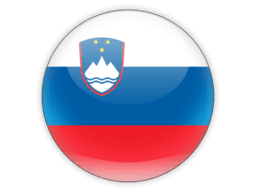
Regions of Slovenia
Explore 50 regions
Cities of Slovenia
Discover 50 cities across 9 regions
Ajdovščina Municipality(1)
Bled(1)
Brežice(1)
Celje(1)
Cerknica(1)
Črnomelj Municipality(1)
Domžale(1)
Grosuplje(1)
Hrastnik Municipality(1)
Slovenia is a small country located in central Europe, bordered by Italy to the west, Austria to the north, Hungary to the northeast, and Croatia to the south and southeast. The country has a population of around 2.1 million people and its capital and largest city is Ljubljana.
Slovenia is known for its natural beauty, with its stunning landscapes including the Julian Alps, lakes, rivers, and forests. It is also home to several important caves, including the Postojna Cave, which is one of the largest in the world.
The country has a rich cultural heritage and is home to many historic landmarks and buildings, including medieval castles, churches, and monasteries. Some of the most popular tourist attractions include Lake Bled, the Predjama Castle, the Lipica Stud Farm, and the Skocjan Caves.
Slovenia has a highly developed economy and is a member of the European Union and NATO. Its economy is driven by manufacturing, services, and tourism. The country has a highly skilled workforce, with a strong emphasis on education and innovation.
The official language of Slovenia is Slovene, which is spoken by the vast majority of the population. English is also widely spoken, especially in tourist areas. The country has a diverse cuisine, with influences from neighboring countries, as well as its own unique dishes. Some of the most popular dishes include goulash, stuffed peppers, and potica, a traditional sweet bread.
Telephone Code
386
Local Emergency Phone
112
Vaccinations
See WHO recommendations
Climate
Mediterranean climate on the coast, continental climate with mild to hot summers and cold winters in the plateaus and valleys to the east
Currency (Code)
Euros (EUR)
Electricity/Voltage/Plug Type(s)
230 V / 50 Hz / plug types(s): C, F
Major Languages
Slovenian, Serbo-Croatian, Italian, Hungarian
Major Religions
Catholic 57.8%, Muslim 2.4%, Orthodox 2.3%, other Christian 0.9%
Potable Water
Yes
International Driving Permit
Suggested
Road Driving Side
Right
Tourist Destinations
Lake Bled; Postojna Cave & Predjama Castle; Piran; Ljubljana; Royal Lipizzaner Horses from Lipica; Triglav National Park & So?a River
Major Sports
Soccer, athletics (track and field), basketball, boxing, handball
Cultural Practices
It is proper to bring gifts when invited into a household. Chocolates and wine are always appreciated.
Tipping Guidelines
In larger cities and major tourist areas, it is customary to leave about 10% of the bill; if you receive exceptional service, leave 15%.
Souvenirs
Handmade lace; dragon-, carnation-, folklore-, and beehive-themed ceramic and wood decorative items; replica boats; crystal; gold jewelry; woven baskets; liquor and wine; Soviet-era money, stamps, and military paraphernalia
Traditional Cuisine
Štruklji — rolls of filo dough filled with savory or sweet fillings including meat, cottage cheese, apple, or walnuts; the dumplings can be boiled, steamed, or fried and served as a side dish to meat or as a dessert
Geography
Area
total: 20,273 sq km
land: 20,151 sq km
water: 122 sq km
Climate
Mediterranean climate on the coast, continental climate with mild to hot summers and cold winters in the plateaus and valleys to the east
Natural resources
lignite, lead, zinc, building stone, hydropower, forests
People and Society
Population
2,099,790 (2023 est.)
Ethnic groups
Slovene 83.1%, Serb 2%, Croat 1.8%, Bosniak 1.1%, other or unspecified 12% (2002 est.)
Languages
Slovene (official) 87.7%, Croatian 2.8%, Serbo-Croatian 1.8%, Bosnian 1.6%, Serbian 1.6%, Hungarian 0.4% (official, only in municipalities where Hungarian national communities reside), Italian 0.2% (official, only in municipalities where Italian national communities reside), other or unspecified 3.9% (2002 est.)
Religions
Catholic 57.8%, Muslim 2.4%, Orthodox 2.3%, other Christian 1%, unaffiliated 3.5%, no response or unspecified 22.8%, none 10.1% (2002 est.)
Population growth rate
-0.08% (2023 est.)
Government
Government type
parliamentary republic
Capital
name: Ljubljana
Economy
Economic overview
high-income, fast-growing EU-member economy; high human capital; key health infrastructure investments; high government spending; key Croatian investments; high-technology and manufacturing sectors; growing financial hub
Real GDP (purchasing power parity)
$84.4 billion (2021 est.)
Real GDP per capita
$40,000 (2021 est.)
Agricultural products
milk, maize, wheat, grapes, barley, potatoes, poultry, apples, beef, pork
Industries
ferrous metallurgy and aluminum products, lead and zinc smelting; electronics (including military electronics), trucks, automobiles, electric power equipment, wood products, textiles, chemicals, machine tools
Exports
$51.634 billion (2021 est.)
Exports - partners
Germany 18%, Italy 11%, Croatia 8%, Austria 7%, France 5%, Switzerland 5% (2019)
Exports - commodities
packaged medicines, cars and vehicle parts, refined petroleum, electrical lighting/signaling equipment, electricity (2019)
Imports
$47.665 billion (2021 est.)
Imports - partners
Germany 14%, Italy 12%, Austria 8%, Switzerland 8%, China 7% (2019)
Imports - commodities
packaged medicines, cars and vehicle parts, refined petroleum, delivery trucks, electricity (2019)
International Airports in Slovenia
Discover 1 major airports serving Slovenia
Mark Slovenia as Visited
Add Slovenia to your personal travel map and track your journey around the world. Share your adventures and see your progress grow!